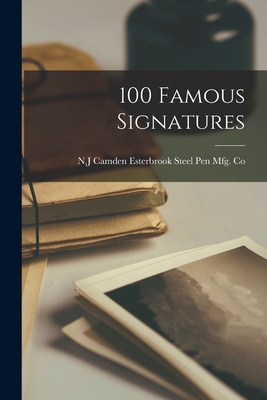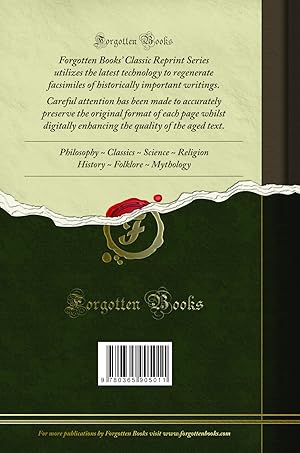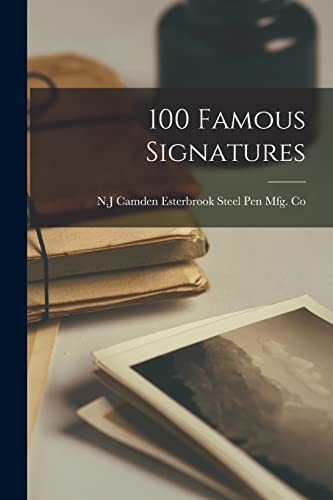The Esterbrook Steel Pen Co (7 results)
Product Type
- All Product Types
- Books (7)
- Magazines & Periodicals
- Comics
- Sheet Music
- Art, Prints & Posters
- Photographs
- Maps
-
Manuscripts &
Paper Collectibles
Condition
Binding
Collectible Attributes
- First Edition
- Signed
- Dust Jacket
- Seller-Supplied Images (3)
- Not Printed On Demand (3)
Free Shipping
Seller Location
Seller Rating
-
Original Advertising Card - "Esterbrook's; The Esterbrook Steel Pen Co."
Seller: Barry Cassidy Rare Books, Sacramento, CA, U.S.A.
No Binding. Condition: Collectible-Near Fine (Near Fi. Original advertising card printed on white paper. No date, circa 1890s-1910s. 6" x 4." Advertising card is clean and intact overall except for light age toning and a few lines of darkening on front that partially affects text. Text is still readable. A Very Good copy. Advertising card for the Esterbrook Steel Pen Company. The card promotes the company's signature Esterbrook steel pens. Illustrated samples of their nibs appear to the left, namely, "No. 130, Easy Writer," "No. 048, Falcon," and "No. 313, Probate." The Esterbrook Steel Pen Company was founded in 1858 by its namesake, Richard Esterbrook (1812-1895). The company enjoyed over a century of operation until it closed in 1971. The brand name of Esterbrook was revived in 2014 which is still in use to this day under Kenro Industries, Inc. Advertising cards are interchangeable with trade cards. Trade cards are antique business cards that first became popular during the late seventeenth century in Paris and Lyon, France and London, England. Trade cards were often given by business owners and proprietors to patrons and customers as a way to promote their businesses. Prior to the use of street addresses, trade cards had maps so clients could locate the associated business. Many of these cards also incorporated elaborate designs, illustrations, and other decorative features. Trade cards became popular in the United States during the nineteenth century in the period after the Civil War. The late nineteenth century also saw the advent of trade card collecting as a hobby. While they are no longer in use, trade cards influenced the formation of trading cards and were the predecessors of modern-day business cards.
-
100 Famous Signatures (Paperback or Softback)
Published by Legare Street Press 9/10/2021, 2021
ISBN 10: 1015113893ISBN 13: 9781015113893
Seller: BargainBookStores, Grand Rapids, MI, U.S.A.
Book
Paperback or Softback. Condition: New. 100 Famous Signatures 0.11. Book.
-
100 Famous Signatures (Classic Reprint)
Published by Forgotten Books, 2018
ISBN 10: 0365905011ISBN 13: 9780365905011
Seller: Forgotten Books, London, United Kingdom
Book Print on Demand
Paperback. Condition: New. Print on Demand. Excerpt from 100 Famous Signatures. About the Publisher, Forgotten Books publishes hundreds of thousands of rare and classic books. This book is a reproduction of an important historical work. Forgotten Books uses state-of-the-art technology to digitally reconstruct the work, preserving the original format whilst repairing imperfections present in the aged copy. In rare cases, an imperfection in the original, such as a blemish or missing page, may be replicated in our edition. We do, however, repair the vast majority of imperfections successfully; any imperfections that remain are intentionally left to preserve the state of such historical works. This text has been digitally restored from a historical edition. Some errors may persist, however we consider it worth publishing due to the work's historical value. The digital edition of all books may be viewed on our website before purchase. print-on-demand item.
-
100 Famous Signatures
Published by Legare Street Press, 2021
ISBN 10: 1015113893ISBN 13: 9781015113893
Seller: Ria Christie Collections, Uxbridge, United Kingdom
Book Print on Demand
Condition: New. PRINT ON DEMAND Book; New; Fast Shipping from the UK. No. book.
-
100 Famous Signatures
Published by Legare Street Press, 2021
ISBN 10: 1015113893ISBN 13: 9781015113893
Seller: THE SAINT BOOKSTORE, Southport, United Kingdom
Book Print on Demand
Paperback / softback. Condition: New. This item is printed on demand. New copy - Usually dispatched within 5-9 working days.
-
100 famous signatures (1924) [Leatherbound]
Publication Date: 2022
Seller: S N Books World, Delhi, India
Book Print on Demand
Leatherbound. Condition: NEW. Leather Binding on Spine and Corners with Golden leaf printing on spine. Bound in genuine leather with Satin ribbon page markers and Spine with raised gilt bands. A perfect gift for your loved ones. Reprinted from 1924 edition. NO changes have been made to the original text. This is NOT a retyped or an ocr'd reprint. Illustrations, Index, if any, are included in black and white. Each page is checked manually before printing. As this print on demand book is reprinted from a very old book, there could be some missing or flawed pages, but we always try to make the book as complete as possible. Fold-outs, if any, are not part of the book. If the original book was published in multiple volumes then this reprint is of only one volume, not the whole set and contains approximately 24 pages. IF YOU WISH TO ORDER PARTICULAR VOLUME OR ALL THE VOLUMES YOU CAN CONTACT US. Resized as per current standards. Sewing binding for longer life, where the book block is actually sewn (smythe sewn/section sewn) with thread before binding which results in a more durable type of binding. Language: English.
-
The Garfield Initial pen; 1881
Published by The Esterbrook Steel Pen Company, Camden, NJ, 1883
Seller: Ground Zero Books, Ltd., Silver Spring, MD, U.S.A.
Other. Condition: Good. This item is listed in a 1884 catalogue as being of bronze color, being for general business use, and having a medium fine tip. The Esterbrook Pen Company is a former American manufacturing company founded by English immigrant Richard Esterbrook and based in Camden, New Jersey. It was the largest pen manufacturer in the United States, having reached a record of producing 216,000,000 pens a year. Quality was a key factor in his success. Esterbrook's steel pens were versatile, long lasting, and came in many different styles to fit the varied writing styles of the public. At its height, the Esterbrook plant had 450 workers and produced 600,000 pens a day. The company produced dip pens, then concentrating on fountain pens until it was acquired by Venus Pencils in 1967. There were no experienced pen-manufacturing workers in the U.S. and no broadly available machinery to produce the pens, so Esterbrook designed all processes in-house. Only 15 people made up the first payroll, but the growth of the company was steady. Esterbrook pens were among those used by Presidents John F. Kennedy and Lyndon B. Johnson to sign legislation. A set of 72 clear Lucite Esterbrook fountain pens were used to sign the civil rights bill into law in 1964. The famous Disney artist Carl Barks was an enthusiastic user of Esterbrook pens. He particularly used a Nº 356 model to ink and letter his famous Donald Duck comic-book pages. Esterbrook advertising in the early 1900's claimed to have 250 different styles of nibs. Many nibs never became popular enough to justify their continued manufacture. A nib is the part of a quill, dip pen, fountain pen, ball point or stylus which comes into contact with the writing surface in order to deposit ink. Different types of nibs vary in their purpose, shape and size, as well as the material from which they are made. Metal nibs have their origins as far back as ancient Egypt and were made of metals like copper and bronze. However, the quality of writing that could be achieved with these pens was inferior to that of reed pens. Metallic nibs were made up through the 18th-century as one-off, craftsman-made luxury items In the early 1800s, Wise in Britain, and Peregrine Williamson in the United States were the first recorded makers of steel pens as their primary occupation. It was not until the 1820s, when John Mitchell, Josiah Mason and others set up a factory in Birmingham, England to manufacture steel nibs, that their popularity took off. The metal nib retains a sharp point or edge much longer than the quill, which wears out more quickly and requires much skill to sharpen. Metal nibs are also easily manufactured to have different properties for different purposes. Also, they can now be attached to and removed from holders, allowing one to switch between nibs with relative ease. The pointed nib is flexible and comes to a sharp point rather than a broad edge. Thick and thin strokes are achieved by varying the amount of pressure on the nib. Thick lines are created on downstrokes by pushing down on the nib, causing the nib tines to splay and allowing more ink to flow through the widened slit onto the writing surface. Lighter pressure produces less flexing of the tines, creating thinner strokes. The finest hairline strokes are created on the upstrokes and sideways strokes. Due to the shape of the pointed nib, thick lines can only be produced on downstrokes. If too much pressure is applied to the pen on an upstroke, the nib tines are likely to dig into the paper. Pointed nibs originated in the 17th century and were initially created by hand from quills in a similar fashion to broad-edge nibs. Towards the end of the Industrial Revolution in the early 19th century, high demand for nibs coupled with steel manufacturing processes eventually led to the mass production of the steel nib. Pointed nibs also led to the development of newer styles of penmanship such as the English Round Hand and Copperplate scripts during the 17th and 18th centuries, as well as the Spencerian script in the 19th century. Pointed pens are also used by artists and drafters for sketching, mapping and technical drawing. Although any pointed nib can be used for drawing, there are nibs available that resemble writing nibs but are specially designed for pen drawing. Stock number 1881, Introduced in 1883 Esterbrook Catalogue.






![Seller image for 100 famous signatures (1924) [Leatherbound] for sale by S N Books World](https://pictures.abebooks.com/inventory/md/md30863722291.jpg)